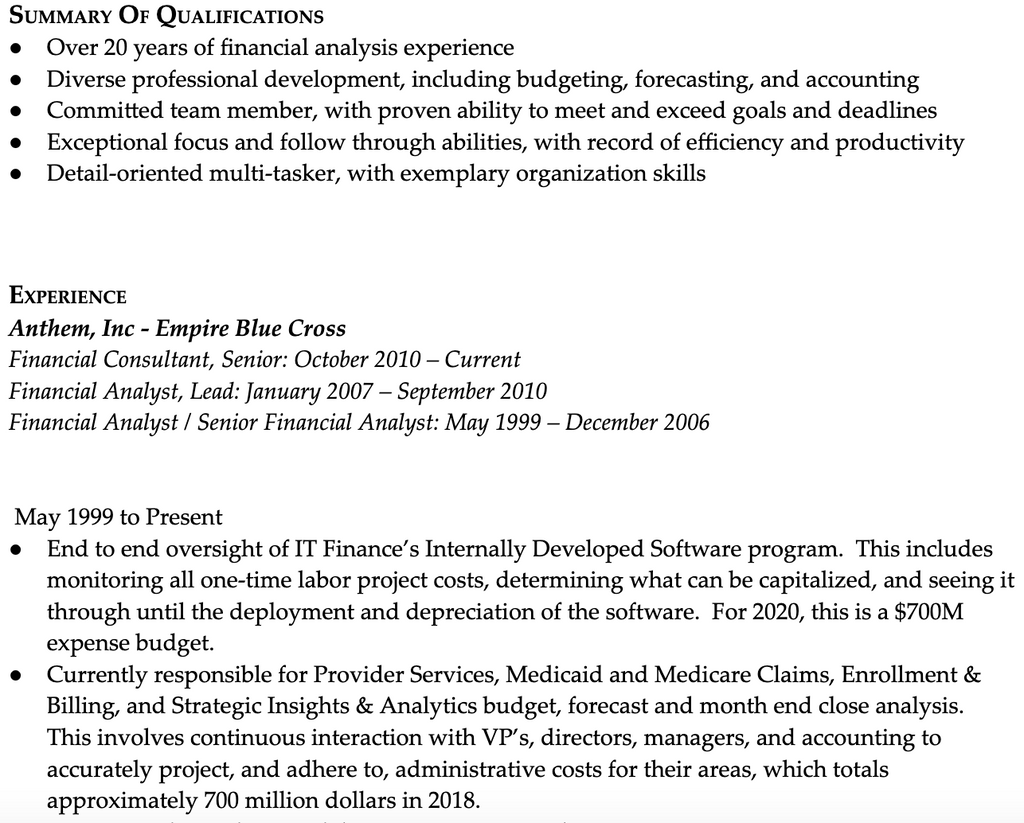
If you're inching toward the end of your schooling, chances are you're looking for a job, maybe even your dream job. One of the most important steps in this journey is creating a resume and cover letter that will land you an interview. Many job seekers, especially those new to the process, face an obstacle: how can you get a job when you have no experience? Most employers want to know about experience. Today, we're focusing on how to craft a resume when you don't have experience. This isn't just great for people knew to the job market, but also those interested in switching fields.
Resumes by the Numbers: What you Need to Know
Curious about the trends around resumes? Here are the ones you need to know to help you create the perfect one:
- The average resume has eyes on it for 6.5 seconds. Curious how long that is? It takes about 14 seconds to sing the alphabet song, including the part at the end. What does this matter? Knowing how little time you have means you've got to present your resume in a way that's going to capture attention in less the time it takes to sing the alphabet.
- 63% of recruiters want the resumes personalized to the job. It's a common practice to send the same resume to everyone, but unless you're answering the exact same job descriptions, it's much better to take the time to show you know about the job, the expectations, and, most importantly, why you're the candidate for the position.
- 50% of recruiters say that "too many grammatical errors" is the biggest mistake they see on resumes. Yikes! Everyone makes mistakes but your resume is not the time for it.
The Experience Trap
You want a job. The hiring managers want experienced candidates. You've never been employed. Or, you've never been employed in this field or type of position.
How do you land a job without having any, or relevant, experience?
Consider using a different format of resume that shows off the skills you have. That's right, you don't have to give employers the traditional, chronological resume. Instead, move to a functional resume.

How can You Craft a Resume with no Experience?
When it comes to creating a resume, it's important to not simply follow the standard template.
Most people are taught the chronological resume, but often, functional resumes make more sense.
Chronological resumes lay out, in reverse chronological order, your employer, role and duration of employment. This is great for people who are applying for a job with a similar job description to positions they've previously held.
Essentially: chronological resumes are good for people with experience.Functional resumes, on the other hand, does not focus on experience. It shows off key skills, relevant projects, relevant coursework and focuses on ability.
How to Create Your Functional Resume
First things first: writing a functional resume takes practice. The process is incongruent with what we've been taught and done, so it may take some time to get it right.
Step 1: Familiarize Yourself With the Position
Read through the job posting and highlight what strikes you as the key skills they're seeking. Ignore how many years of experience it requests. Focus, instead, on clues in the job application or posting about the necessary skills for the job.
Step 2: Distill Your Highlights to Skills
Once you've highlighted what they are looking for, decide the specific skills they are seeking. For example, if a position is posted that includes, "Updating our pipeline tools for registering and developing new opportunities," decide what skills this requires. They're looking for someone who is organized and can create systems for better lead gen.
Before you worry that you've never updated a pipeline tool for registering and developing new opportunities, move on to the next thing you highlighted and write down the skill it requires.
Step 3: Assess how You Measure up
Once you have a list of skills, think about how you have illustrated them.
Let's go back to the same example: being organized and can create systems.
Maybe you haven't done that, but maybe in an internship you used a platform like Trello to create workflows. Maybe you were a shift supervisor in charge of scheduling (no easy task!).
Rather than thinking about the specific task, think about the skills it requires and make a list of when you have exercised those skills.
Continue this for every skill that came out of your highlights.
Step 4: Determine Your Relevant Sections
Where the chronological resume focuses on things like "professional experience" (which you don't have if you're reading this post), you create the sections.
Create sections for the skills and use the bullets to show how you used them.
Now, instead of putting internships or irrelevant experiences front and center on your resume, you've highlighted your skills.
Essentially, you are saying: this is how I have exhibited the skills you're seeking.
Anatomy of a Functional Resume
When you're creating a functional resume, you want to focus on skills and get away from listing jobs.
We've included examples of the types of resume to help illustrate how to move from chronological to functional in the event you're new to a field or to the work world.
Here's the chronological resume of someone who has worked in finance for twenty years but is seeking a new position. This person is a prime candidate for using a chronological resume:

Here's an example of a functional resume for someone who quit traditional work as an attorney, to chase the dream of becoming a freelance writer:

Notice the difference in how information is presented. The second, functional, resume does not mention an employer, dates or qualifications. It highlights core skills, gives examples of what they've done professionally (but doesn't highlight the short time in which they've been doing this) and then highlights their career highpoints.
Here is another example of a functional resume:

Will Your Functional Resume get Tossed?
A common fear is that companies will disregard a functional resume because it doesn't follow the familiar format.
There are lots of articles on the internet that state recruiters hate functional resumes. But recruiters also dislike resumes that don't show experience.
By taking the time to craft each resume to match the job (using the steps above) and submitting it with an excellent cover letter (our next post, stay tuned!), you're able to put your skills at center stage and hook a recruiter or hiring manager.
Should I Include my Work Experience?
Yes! If you have held professional positions or a relevant internship, it's very important to include that under work experience.
Work experience should come at the bottom of your functional resume.
Final Thoughts on Resumes
When it comes to sending your resume out in the world, there are several ways to get a leg up: even without traditional experience or employment.
First, take the time to use a complete process of analyzing the job descriptions or postings you're interested in for the skills companies are seeking. A personalized resume will go much farther than one that is a template used over and over.
Second, create a functional resume that shows off your skills rather than showing experience that doesn't match the qualifications of the position.
Third, proofread (or give to someone else to proofread) your resume for spelling and grammatical errors.
Finally, keep trying! Landing your first job ever, or in a new field, is challenging but with patience and care, you'll find the best fit for your skills.




Leave a comment
All comments are moderated before being published.
This site is protected by reCAPTCHA and the Google Privacy Policy and Terms of Service apply.